"Did you know that nearly half of older adults suffer from sleep disorders, with insomnia being the most common? This persistent issue not only reduces quality of life, but it can also intensify existing medical conditions and lead to serious health risks."
Comprehensive Relief: Addressing Insomnia in Seniors Effectively
- Practical strategies for improving sleep in older adults
- Understanding causes of insomnia in seniors
- Evidence-based treatments and self-care tips for sleep disorders

What You'll Learn About Insomnia in Seniors
- The difference between common sleep problems and chronic insomnia in older adults
- Links between circadian rhythm, medical conditions, and age-related sleep issues
- Why cognitive behavioral therapy is effective for insomnia in older adults
- Proven behavioral therapy techniques to aid seniors' sleep
Recognizing Insomnia in Seniors: Symptoms and Early Warning Signs
Common Sleep Disorders in Older Adults
- Difficulty falling or staying asleep
- Waking up too early
- Daytime fatigue or mood changes
Insomnia in seniors is more than an occasional restless night—it's a persistent issue that can dramatically impact quality of life and overall health. Common sleep disorders among older adults include difficulty falling asleep, staying asleep, or waking up too early, often paired with chronic fatigue or mood shifts during the day. These challenges can result from normal aging processes, but sometimes they point to underlying sleep disorders that demand attention.
Over time, sleep disorders can make it difficult for older adults to enjoy daily activities or maintain relationships, and chronic lack of sleep increases the risk of accidents and health complications. It’s critical to notice early warning signs—such as regular exhaustion, increased irritability, or memory lapses—so that action can be taken before sleep problems escalate. Recognizing these symptoms is the first step in managing insomnia in older adults, and seeking support early can prevent a downward spiral of poor sleep and declining health.
Many older people believe that sleep problems are simply a normal part of aging, but persistent insomnia in seniors may indicate a more serious sleep disorder. By identifying whether you—or a loved one—are experiencing consistent sleep disturbances, you can take meaningful action toward addressing both the root causes and the consequences of insomnia in seniors.
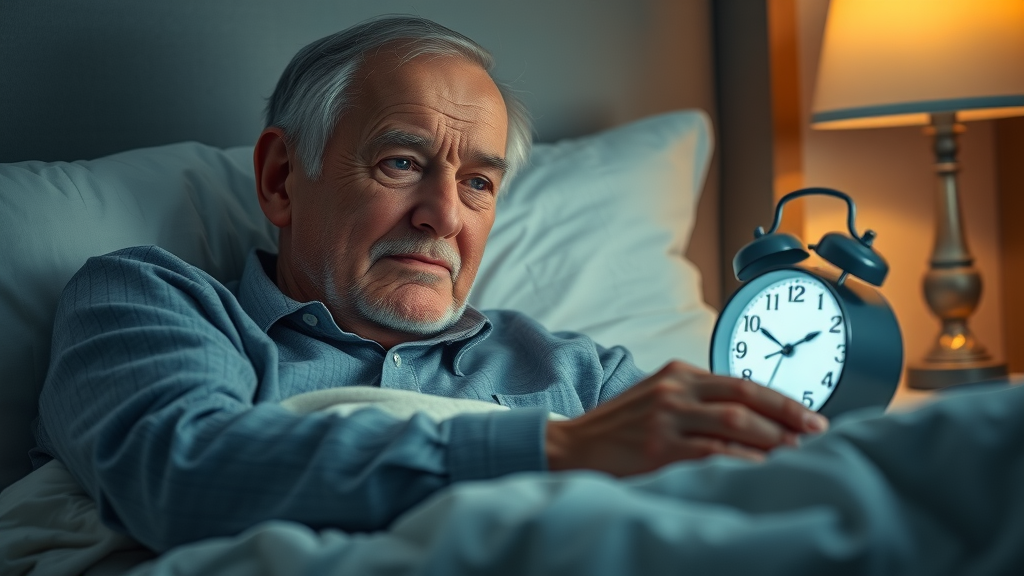
How Insomnia in Older Adults Differs from Other Sleep Disorders
- Comparison with REM sleep disruption, restless legs syndrome, and sleep apnea in seniors
While insomnia is the leading sleep disorder among seniors, it's important to distinguish it from other types that can look similar but require different approaches. Rapid eye movement (REM) sleep disruptions —such as REM sleep behavior disorder—often result in vivid dreams or acting out during sleep, unlike insomnia, which is marked by trouble falling or staying asleep. Restless legs syndrome (RLS) involves uncomfortable sensations and the urge to move the legs, making restful sleep almost impossible, while sleep apnea is characterized by breathing pauses and loud snoring, often leading to daytime exhaustion.
Insomnia in older adults is unique because it is more closely related to changes in sleep patterns, such as increased wakefulness during the night and lighter sleep overall. Unlike sleep apnea or RLS, which have clear medical markers, insomnia is more often diagnosed by patterns of poor sleep and the impact on daytime functioning. Understanding these distinctions helps both older adults and their caregivers choose the right interventions and avoid treatments that are ineffective or potentially harmful.
Recognizing the differences between these disorders also clarifies why some therapies work for insomnia in seniors but may not address issues stemming from other conditions. For example, while CPAP is effective for sleep apnea, cognitive behavioral therapy is the gold standard for chronic insomnia. This nuanced understanding is essential for targeted relief and better sleep quality among older adults.
The Most Common Sleep Disorder in Older Adults
| Condition | Prevalence | Key Symptoms | Risk Factors |
|---|---|---|---|
| Insomnia | 48% | Trouble initiating/maintaining sleep | Age, medical conditions |
| Sleep Apnea | 20% | Breathing pauses, snoring | Obesity, male gender |
| Restless Legs Syndrome | 15% | Leg discomfort, urge to move | Iron deficiency, diabetes |
Among all sleep disorders affecting older adults, insomnia in seniors is by far the most prevalent, impacting nearly half of adults aged 60 and above. Unlike other sleep issues, such as sleep apnea or restless legs syndrome, insomnia is characterized by ongoing difficulty in either falling asleep, staying asleep, or waking up too early and being unable to return to sleep. These patterns lead to significant daytime impairments, including concentration problems, mood swings, and lowered energy levels.
The reasons for this high prevalence are varied. Aging brings about changes in the sleep cycle, including shorter and lighter sleep, reduced rapid eye movement sleep, and increased nighttime awakenings. Chronic medical conditions like arthritis, diabetes, or heart disease only add to the risk, as do some medications commonly prescribed to older adults. With such a widespread impact, it’s vital for seniors and their caregivers to recognize that persistent trouble sleeping is a manageable sleep disorder, not just a normal sign of aging.
Knowing that insomnia is the most common sleep disorder in this population underlines how important early recognition, proactive lifestyle changes, and evidence-based treatments are to safeguarding both mental and physical health for every older adult. This approach not only tackles the sleep problem itself but can help reduce the risk of compounded health issues like falls, depression, or cardiovascular disease.
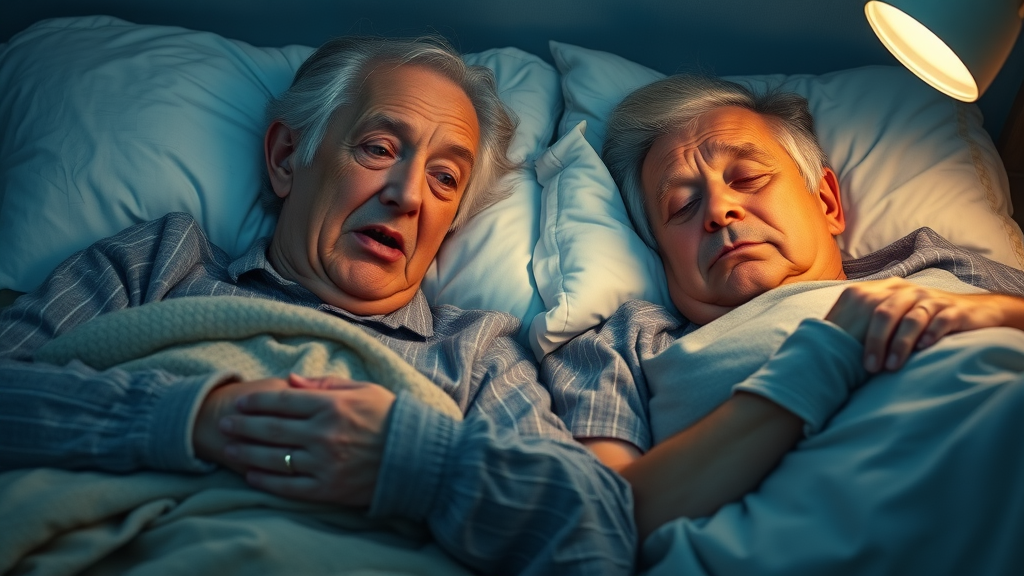
Factors Influencing Insomnia in Seniors
Medical Conditions That Trigger Sleep Disorder in Older Adults
- Chronic pain, arthritis, diabetes, and heart disease
Many medical conditions common in older adults can act as triggers for insomnia in seniors and disrupt the body’s natural sleep pattern. Chronic pain from arthritis or back problems makes it hard to get comfortable in bed, often resulting in frequent awakenings and a broken sleep cycle. Diabetes and cardiovascular diseases may cause symptoms that stir a person from sleep, like leg cramps, restless legs, or even chest discomfort—each contributing to poor sleep quality.
Medications used to treat these medical conditions can also have unintended side effects such as sleep disturbances. For example, certain blood pressure medications, corticosteroids, and even some treatments for depression or anxiety may cause difficulty falling asleep or staying asleep. Understanding these links can help an older adult and their healthcare provider design a more effective approach to minimizing sleep disruption.
By recognizing the interaction between chronic health issues and insomnia in older adults, caregivers and medical professionals can often reduce sleep problems by managing pain better, adjusting medication schedules, or exploring alternatives with fewer sleep-related side effects. Tackling these root causes is crucial to restoring restorative sleep in seniors and enhancing their overall well-being.
How Circadian Rhythm Changes Affect Older Adults
- Early bedtimes/awakenings
- Reduced REM sleep and sleep efficiency
The body's natural circadian rhythm —our internal clock—regulates when we feel awake and when we feel sleepy. As people age, this rhythm can shift forward, causing older adults to get sleepy earlier in the evening and wake up earlier in the morning. These changes, often described as “advanced sleep phase,” lead many seniors to struggle with maintaining a full night of restful sleep, contributing to insomnia.
In addition to shifted sleep timing, older adults experience less deep sleep and a reduction in REM sleep, the stage associated with dreaming and mood regulation. This results in lighter, more fragmented sleep, making it easier for noises, aches, or other disruptions to wake them during the night. A disrupted circadian rhythm can also make it harder to fall asleep after nighttime awakenings, reinforcing the cycle of insomnia in older adults.
Fortunately, techniques such as bright light therapy and regular exposure to natural daylight are proven to help synchronize the circadian rhythm to a healthier schedule, making it easier for seniors to fall asleep, stay asleep, and wake up feeling refreshed.
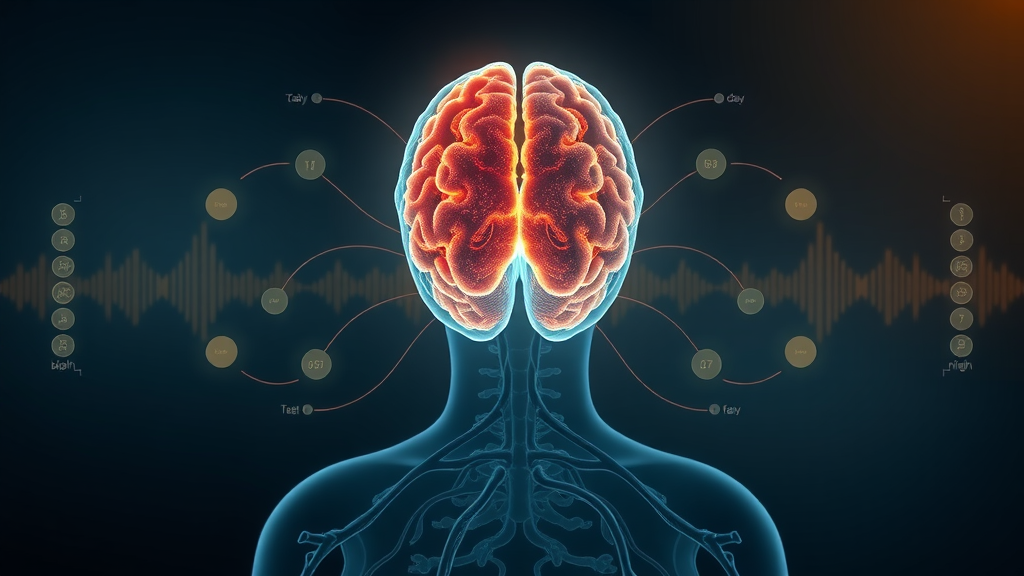
Medication and Its Role in Insomnia in Seniors
- List of common medications linked to sleep disruption
A surprising number of routine medications can cause or worsen insomnia in seniors. Medications for high blood pressure (like beta blockers), some antidepressants, corticosteroids, bronchodilators for lung problems, and even certain over-the-counter remedies (such as decongestants or allergy medications) are well-known for their potential to disrupt sleep. In fact, medication-induced insomnia is often overlooked as a cause of chronic sleep disturbance in older adults.
Sleep problems may arise when these medications make it difficult to fall asleep, stay asleep, or achieve deep, restorative sleep. Caffeine-containing pain relievers, diuretics (which increase nighttime trips to the bathroom), and stimulating prescription drugs can all fragment normal sleep patterns. For many older adults already at risk for sleep issues, adding a medication with stimulating qualities only intensifies the problem.
If sleep disorder symptoms appear soon after a new medication regimen begins, it's crucial to bring this up with a healthcare provider. Never stop medication on your own; instead, discuss alternatives or adjustments that could improve both health outcomes and sleep quality for seniors facing medication-related insomnia.
Link Between Cognitive Decline and Insomnia in Older Adults
- Impact of dementia and Alzheimer’s disease on sleep disorder prevalence
- Interplay between poor sleep and cognitive behavioral issues
Cognitive decline, including conditions like dementia and Alzheimer's disease, has a well-documented impact on sleep disorder prevalence among older adults. Seniors experiencing these conditions often face distinctive challenges, such as frequent nighttime awakenings, confusion upon waking, and even behavioral disturbances like sundowning. These sleep disturbances are not just symptoms—they can actually worsen cognitive decline, creating a difficult cycle where poor sleep accelerates memory loss and confusion.
Studies have shown that chronic insomnia in older adults increases the risk of developing cognitive impairments, including more rapid progression of dementia. Poor sleep impairs the brain’s ability to consolidate memories, process new information, and regulate mood. Addressing sleep disorders can help slow the decline and improve both cognitive function and behavior in affected seniors.
For caregivers, understanding the strong connection between insomnia in seniors and cognitive decline is a first step toward effective intervention. Combining behavioral therapy, optimized routines, and, if needed, medical evaluation can lead to better sleep and, subsequently, better brain health for older adults.
Proven Treatments for Insomnia in Seniors
Cognitive Behavioral Therapy for Insomnia in Older Adults
- Step-by-step guide to CBT techniques for sleep disorders
Cognitive behavioral therapy (CBT) is widely regarded as the gold standard for treating chronic insomnia in older adults. CBT focuses on addressing the underlying thoughts, habits, and behaviors that contribute to poor sleep—empowering individuals to reclaim healthy sleep patterns without reliance on medication. A typical CBT program for sleep disorders involves setting a consistent sleep schedule, managing worries or anxieties about sleep (sometimes via a sleep diary), and learning relaxation techniques.
"Cognitive behavioral therapy is considered the gold standard for treating chronic insomnia in older adults." – Sleep Foundation
Sessions usually include education on the sleep cycle, rapid eye movement (REM) sleep, and the role of circadian rhythm—all tailored to the needs of older adults. This makes cognitive behavioral therapy an optimal, non-drug intervention for insomnia in seniors, leading to lasting benefits and improved quality of life.
Behavioral Therapy and Lifestyle Changes
- Sleep hygiene routines
- Limiting caffeine, regulating naps, creating restful environments
Simple behavioral therapy and lifestyle adjustments can dramatically improve sleep quality for seniors facing insomnia. Sleep hygiene involves maintaining a consistent schedule, using the bed only for rest, and cultivating a dark, cool, and quiet sleep environment. Avoiding caffeine and heavy meals in the evening, limiting naps—especially later in the day—and making downtime before bed a priority can set the stage for better sleep.
Other proven strategies include establishing comforting bedtime routines: gentle stretching, mindful breathing, or reading to unwind can help shift the body towards sleep. Keeping digital devices out of the bedroom and reducing exposure to screens before bedtime support healthier circadian rhythms, as does increasing natural daylight exposure during the day. Collectively, these behavioral therapy tactics limit the sleep disturbance cycle and promote deeper, more restorative sleep.
Lifestyle changes are often the first line of defense and work well alongside other interventions, with few or no side effects. For many older adults, simply implementing these steps leads to significant improvements in sleep pattern regularity and overall energy.
Medical Treatments and Alternatives
- Overview of sleep medications for seniors
- Role of melatonin and natural sleep aids
- Potential risks and side effects in older adults
Despite the success of non-drug interventions, some seniors may require short-term support from medical treatments. Sleep medications —such as certain sedative-hypnotics or prescription drugs—should be used with caution and only under strict medical supervision due to their risk for dependency, falls, confusion, or worsening cognitive impairment in older adults.
Melatonin supplements and other natural sleep aids, like valerian root or chamomile tea, are sometimes recommended for their milder effects and lower risk profile. However, seniors should always consult their healthcare provider before starting any sleep aid, as drug interactions or side effects can still occur. Prescription sleep medications, over-the-counter options, and even some herbal remedies can compound sedative effects, leading to higher risk of falls or impaired thinking, especially in those with underlying medical conditions.
As always, medical treatments work best as part of a holistic plan that prioritizes cognitive behavioral therapy, lifestyle changes, and proactive management of underlying health issues. Regular follow-up with a healthcare provider ensures the benefits outweigh the risks.
Home Strategies to Manage Insomnia in Seniors
- Sleep schedule consistency
- Light therapy for circadian rhythm adjustments
- Relaxation and mindfulness exercises
Managing insomnia in seniors isn’t just about medical intervention—it starts with daily habits and supportive routines at home. Keeping a regular bedtime and wake-up time, even on weekends, anchors the body’s natural sleep rhythms and builds stronger, more predictable sleep patterns. Light therapy, using either natural sunlight or specialized lamps, can be especially helpful for resetting the circadian rhythm, particularly for those who tend to get sleepy or wake up earlier than desired.
Relaxation routines are also powerful remedies for sleep problems: practicing mindfulness meditation, progressive muscle relaxation, or breathing exercises before bed reduces anxiety, calms the mind, and prepares the body for more restful sleep. Some older adults benefit from gentle evening activities like journaling, listening to soft music, or enjoying a warm bath—all of which cue the brain that it’s time to wind down.
Consistency is key. Over time, these home-based strategies help “train” the brain and body to expect relaxation at night, easing the sleep disturbance cycle and improving both how easily seniors fall asleep and the quality of rest they receive.

How Much Sleep Do Seniors Really Need?
| Age Group | Recommended Hours of Sleep |
|---|---|
| 60-65 Years | 7-8 hours |
| 65-75 Years | 7-8 hours |
| 75+ Years | 7-8 hours |
"The National Sleep Foundation recommends that adults over 65 get 7-8 hours of sleep each night for optimal health."
Despite common myths, the sleep needs of older adults remain remarkably stable across later years of life. Most seniors require 7-8 hours of sleep each night, similar to younger adults. However, the architecture of sleep changes: seniors may spend less time in deep and REM sleep, and nighttime awakenings are more common. Recognizing this, aiming for quality and consistency is just as important as duration.
Not everyone will need exactly the same amount—individual health status, activity level, and personal history play key roles. If an older adult feels rested and alert during the day after 7 hours, that may be their optimal amount. On the other hand, persistent daytime fatigue, irritability, or trouble staying awake signal that a sleep problem may need attention.
It’s vital for seniors and caregivers to know that needing a full night’s sleep is not a luxury but a necessity. Targeting the recommended hours of rest, alongside healthy sleep habits, sets older adults up for continued vitality, better memory, and greater well-being.
Risk Factors That Worsen Insomnia in Seniors
- Social isolation
- Depression and anxiety
- Lack of physical activity, chronic illnesses
Several key risk factors can make insomnia in seniors more severe or stubbornly persistent. Social isolation —a situation more common among older people—can amplify feelings of loneliness and worry, both of which disrupt sleep. Depression and anxiety are closely tied to persistent sleep problems, with each fueling the other in a difficult cycle that keeps restful nights out of reach.
A sedentary lifestyle contributes too. Physical inactivity during the day means the body has less “need” to recharge overnight, leading to difficulty falling asleep and poor sleep quality. Chronic illnesses or acute health events, like a hospitalization or loss of independence, raise stress and undermine routines that support restful sleep.
By actively addressing these risk factors through increased social interaction, physical activity, and appropriate management of mental and physical health, older adults can tackle root causes of sleep disturbance and see meaningful improvement in how they sleep at night.
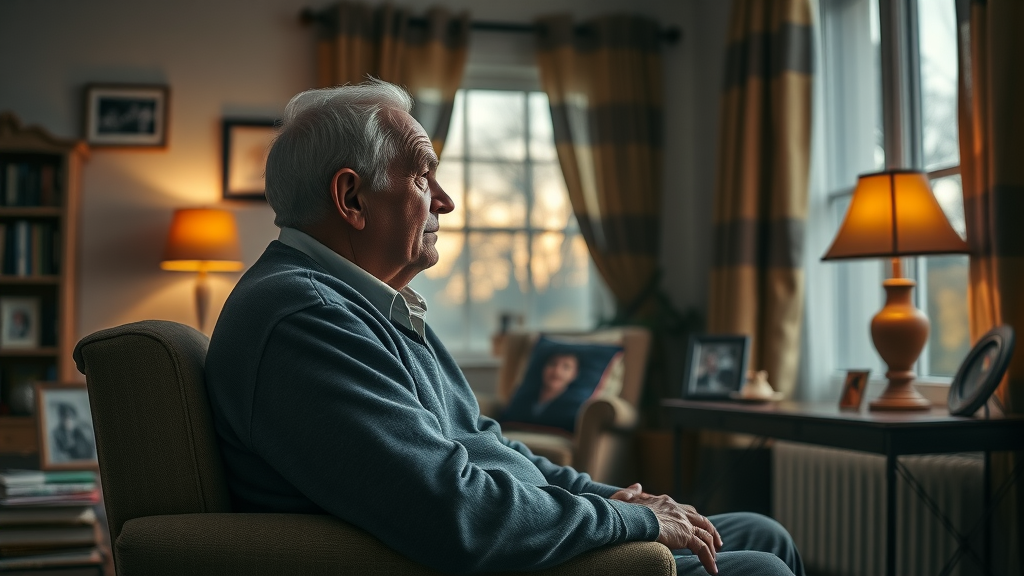
Insomnia in Seniors and Overall Wellbeing
- Relationship between chronic sleep disorder and increased risk of falls, heart disease, diabetes
- Mental health impact: Memory, focus, mood disorders
Insomnia in seniors does more than just lead to tired mornings—it can undermine almost every aspect of health and wellbeing for older adults. Chronic sleep disorders are linked to a higher risk of falls, as fatigue and slower reactions increase the likelihood of accidents both at night and during daytime activities. Cardiovascular diseases, diabetes, and even immune system problems have been tied to chronic insomnia, highlighting the crucial role sleep plays in maintaining a resilient, aging body.
Mental health is especially vulnerable: persistent sleep loss impairs both short- and long-term memory, saps the ability to concentrate, and feeds cycles of depression and anxiety. Seniors who experience chronic insomnia are at higher risk of developing mood disorders, which can further isolate them and create a sense of hopelessness.
Recognizing the ripple effect of insomnia in seniors on overall health is essential for timely intervention. Better sleep isn’t just about feeling rested—it’s pivotal to supporting independence, emotional stability, and physical safety for every older adult.
Misconceptions About Insomnia in Older Adults
- Myth: Needing less sleep with age
- Fact: Sleep quality changes, needs remain stable
One of the most widespread myths about sleep in older adults is the idea that they need less sleep as they age. In fact, while sleep patterns do change—becoming lighter and more fragmented— seniors still require about 7-8 hours of sleep for optimal health and functioning. It’s the quality, not the quantity, of sleep that shifts as we grow older.
Another misconception is that poor sleep is just a normal part of aging and nothing can be done about it. This discourages many older adults from seeking help or making changes that could dramatically improve their sleep quality and overall health. Persistent insomnia in older adults is not inevitable; recognizing and treating it can make a significant difference in wellbeing.
Dispelling these myths helps empower both seniors and their caregivers to take insomnia seriously, ask questions, and pursue remedies that genuinely work.

When to Seek Professional Help for Insomnia in Seniors
- Warning signs to consult a sleep specialist
- Overview of sleep studies and medical evaluations
While modest sleep trouble is common, certain warning signs mean it’s time to call in professional help. Chronic insomnia that lasts for weeks, persistent exhaustion that disrupts daily life, regular trouble falling or staying asleep, or development of new sleep behaviors—such as acting out dreams—are all red flags. Memory loss, mood changes, or increased risk of falls should also prompt a discussion with a healthcare provider.
Sleep specialists can conduct thorough evaluations, including sleep diaries, sleep studies (polysomnography), and medical assessments to rule out underlying conditions like sleep apnea, restless legs syndrome, or rapid eye movement disorders. These tools provide objective data for designing a personalized treatment plan. Medical intervention can unlock greater comfort, safety, and peace of mind for both seniors and those who care for them.
Don’t wait—early intervention with a sleep professional can prevent long-term complications, improve daytime function, and help reclaim the restful nights every older adult deserves.
People Also Ask: What Helps Old People Sleep?
Effective Remedies for Improving Sleep in Older Adults
- Cognitive behavioral therapy, soothing bedtime routines, limiting daytime naps, appropriate medication as prescribed
For older adults struggling to sleep, a combination of cognitive behavioral therapy, bedtime rituals, and careful attention to daily habits offers the most reliable relief. Gentle routines—such as listening to music, practicing relaxation exercises, or reading—increase the body’s readiness for sleep. Limiting naps to early afternoon and keeping them brief preserves nighttime sleep drive. When necessary, a doctor can recommend appropriate medications or natural sleep aids, but these should only be used under medical supervision, and typically for short periods.
The foundation for improving sleep remains behavioral therapy. Simple steps like regular sleep/wake times, optimizing the bedroom environment, and avoiding stimulating substances in the evening will help older adults fall asleep faster, minimize nighttime awakenings, and increase total sleep duration.
For persistent cases, professional help—especially cognitive behavioral therapy for insomnia in seniors—can provide long-term solutions. Consistency and patience with new routines are vital to long-lasting success.
People Also Ask: What is the Most Common Sleep Problem in the Elderly?
Insomnia in Older Adults: Prevalence and Impact
- Insomnia is the most frequently reported sleep disorder, affecting nearly half of older adult population
Insomnia in older adults stands out as the most prevalent sleep disorder, affecting nearly half of those aged 60 and older. While other sleep issues exist, such as sleep apnea and restless legs syndrome, insomnia leads by a significant margin. Its hallmark symptoms include chronic trouble with falling asleep, frequent awakenings at night, and experiencing early morning awakening without feeling rested.
The wide-reaching impact of insomnia in seniors includes loss of energy, difficulty concentrating, and a higher risk of depression, falls, and worsening chronic medical conditions. Because poor sleep quality compounds other age-related vulnerabilities, effectively addressing insomnia offers the greatest potential for improving both health and independence among older adults.
Early recognition and treatment are essential—not just for enhancing sleep, but for preserving overall physical and cognitive wellbeing as we age.
People Also Ask: How Much Sleep Does a 70 Year Old Need?
Recommended Sleep Duration for Older Adults
- Most seniors require 7-8 hours per night, though needs may vary with lifestyle and health status
A 70-year-old typically needs between 7 and 8 hours of sleep per night, echoing the guidelines set by the National Sleep Foundation. The ideal amount may vary depending on personal health, medications, and level of physical activity. Seniors with chronic illnesses or under significant stress may need at the higher end of this range, and some may do well with even slightly more.
Focusing on both the quantity and quality of sleep helps ensure older adults wake up restored and maintain emotional and physical health throughout the day. Tracking sleep patterns in a notebook or sleep diary can help identify issues and track improvements over time.
If regular restlessness, trouble staying asleep, or persistent fatigue are present, it may signal an underlying sleep disorder that should be evaluated by a medical professional.
People Also Ask: Why Don't Elderly Sleep at Night?
Main Causes of Nighttime Wakefulness in Seniors
- Biological changes to circadian rhythm, chronic pain, anxiety, underlying medical conditions, medications
Numerous factors contribute to nighttime wakefulness in seniors. Biological changes —such as altered circadian rhythm—result in earlier sleepiness and awakenings. Chronic pain from arthritis or neuropathy, untreated anxiety or depression, and physical discomfort from medical conditions (like diabetes or heart disease) all disrupt the sleep cycle.
Medications, too, play a significant role—diuretics, some antidepressants, and even cold medicines can fragment sleep and result in frequent awakenings. Addressing each cause systematically improves both the ability to fall asleep and the likelihood of achieving restful, unbroken sleep.
Personalizing sleep strategies to target these root causes gives seniors the best chance at restoring healthy sleep patterns and managing insomnia in older adults once and for all.
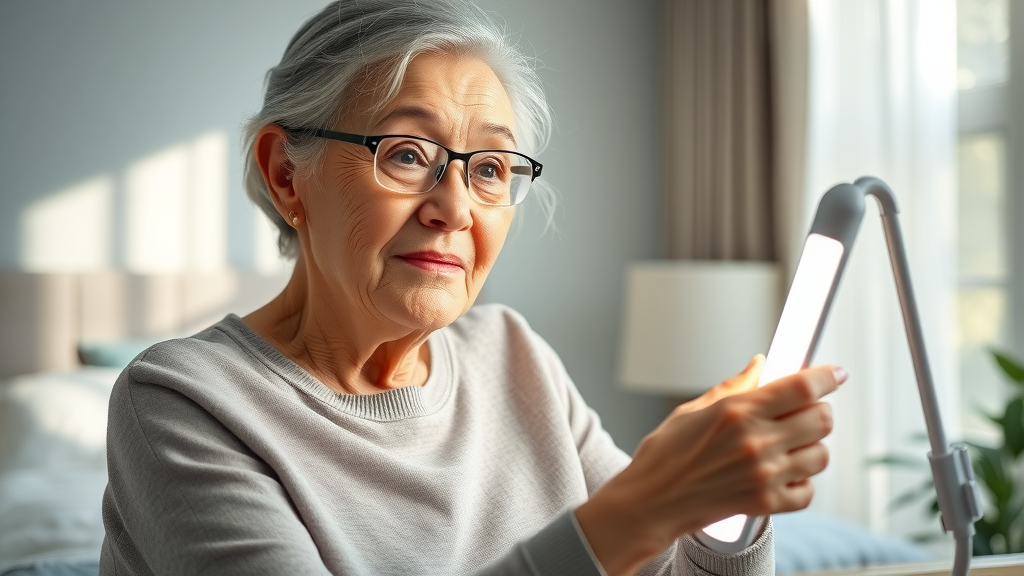
Simple Lifestyle Changes to Reduce Insomnia in Seniors
- Promoting regular exercise
- Exposure to natural daylight
- Avoiding electronic devices before bed
Lifestyle changes are some of the simplest and most effective ways to improve sleep hygiene and reduce insomnia in seniors. Engaging in regular physical activity—like walking, tai chi, or swimming—during the day has been shown to increase sleep drive and enhance both the duration and quality of sleep at night. Exposure to bright, natural daylight in the morning helps regulate the circadian rhythm and signals the brain that it’s time to be awake, sharpening the contrast between day and night.
Avoiding the use of electronic devices with screens (phones, tablets, TVs) in the hour before bed reduces blue light exposure, which can interfere with melatonin production and delay sleep onset. Swapping screens for relaxing activities—such as listening to music or gentle stretching—prepares both mind and body for bedtime. These changes, paired with healthy sleep routines, can be transformative for seniors who suffer from persistent sleep problems.
- Checklist: Sleep Hygiene for Older Adults
- Set a consistent bedtime and wake-up time
- Avoid caffeine in the afternoon or evening
- Keep the bedroom dark, cool, quiet
- Use the bed only for sleep
- Try mindful breathing or gentle stretching at night

Success Stories: Overcoming Insomnia in Older Adults
"After implementing a cognitive behavioral therapy routine, my sleep improved from four to seven hours a night." – 72-year-old patient testimonial
Countless older adults have transformed their lives by actively managing insomnia. Take the example of a 72-year-old who struggled for years with falling asleep and frequent awakenings. After working with a therapist to introduce cognitive behavioral therapy, consistent sleep/wake times, and a soothing bedtime routine, she now enjoys seven hours of restful sleep most nights. This change has restored both her energy and outlook on life.
Another senior, troubled by anxiety and poor sleep, found that daily walks in the park, mindful breathing exercises, and keeping a sleep diary led to less anxiety and deeper sleep. Many others have benefited from light therapy, medication adjustments, and linking up with peer support groups or community sleep workshops when problems seemed overwhelming.
These stories illustrate the power of a proactive, tailored approach to overcoming insomnia in older adults—evidence that with the right support and tools, restful nights and brighter days are achievable at any age.

Frequently Asked Questions About Insomnia in Seniors
-
Is insomnia an inevitable part of aging?
No. While sleep patterns change with age, chronic insomnia is not a normal part of the aging process. It can and should be managed with tailored behavioral, medical, or therapeutic interventions. -
What non-medication therapies help most?
Cognitive behavioral therapy, healthy sleep hygiene, and regular exercise are the most effective non-drug therapies for treating insomnia in older adults. -
Can insomnia in seniors be cured or only managed?
Many older adults experience dramatic improvements—or even resolution—of insomnia with consistent lifestyle and behavioral changes, although chronic cases may require ongoing management. -
What’s the difference between common sleep problems and clinical insomnia in older adults?
Occasional trouble sleeping is common; clinical insomnia is defined by persistent difficulty falling asleep, staying asleep, or non-refreshing sleep that impacts daytime functioning for at least three months.
Resources and Support for Seniors Struggling With Insomnia
- Links to sleep disorder clinics, senior helplines, online cognitive behavioral therapy programs, community support groups
No one has to face insomnia alone. Helpful resources include local and national sleep clinics specializing in older adult care, telephone helplines for seniors, virtual cognitive behavioral therapy programs, and in-person or online support communities for those dealing with sleep disorders. These provide education, encouragement, and direct access to expert care and proven strategies.
For those ready to take action, reaching out to a sleep specialist or joining a support group can offer the fresh perspective and accountability needed for lasting change. Information on reputable providers is often available through your primary care physician, local community centers, or online directories.
Vital Takeaways for Managing Insomnia in Seniors
- Persistent sleep disorders are not just a normal part of aging
- Early recognition and targeted treatment improve quality of life
- Lifestyle modifications, behavioral therapy, and proper medical care are keys to restful sleep
Explore More Solutions for Insomnia in Seniors
- Ready to help yourself or a loved one achieve restful nights? Contact a trusted sleep specialist or download our comprehensive sleep hygiene guide for seniors today.
An educational video that visually explains the biological and lifestyle factors causing insomnia in seniors, with animated diagrams of the circadian rhythm, real-life interviews with geriatric sleep experts, and actionable home strategies.
Watch a step-by-step demonstration of CBT techniques for sleep disorders, including interviews with therapists and testimonials from older adults who have benefited from this gold-standard treatment.
Hear directly from seniors and their caregivers as they share personal stories of conquering insomnia, with practical tips and encouragement for others struggling with sleep.
For Further Reading and References
- Links to peer-reviewed studies on sleep disorders in older adults
- National Sleep Foundation guidelines for seniors
- Cognitive Behavioral Therapy provider directories
Take Action: Break the cycle of insomnia in seniors starting tonight. Evaluate routines, consult professionals when needed, and believe in the power of small, steady changes toward better sleep.
Insomnia is a prevalent issue among seniors, significantly impacting their quality of life and overall health. To gain a deeper understanding of this condition and explore effective management strategies, consider the following resources:
-
“Insomnia in the Elderly: A Review” ( pmc.ncbi.nlm.nih.gov ) provides a comprehensive analysis of the causes, symptoms, and both nonpharmacological and pharmacological treatment options for insomnia in older adults.
-
“Insomnia in the Elderly: Causes and Best Treatments” ( aplaceformom.com ) offers practical advice on preventing insomnia, including establishing regular sleep schedules, creating a restful environment, and when to seek professional help.
By exploring these resources, you can equip yourself with the knowledge and tools necessary to effectively address and manage insomnia in seniors.
 Add Element
Add Element  Add Row
Add Row 




Write A Comment